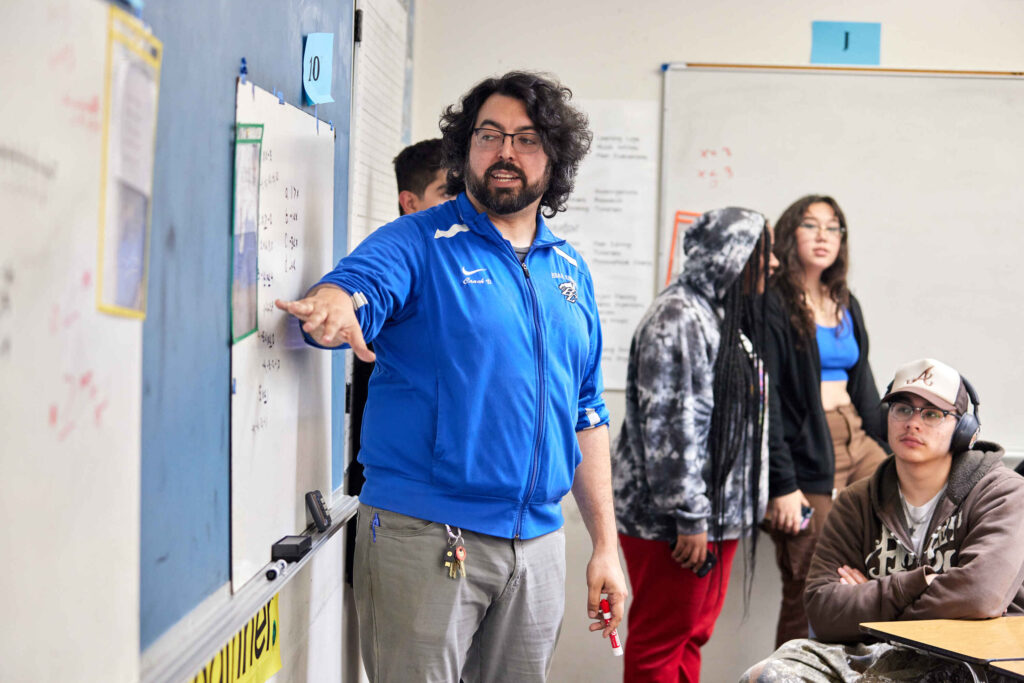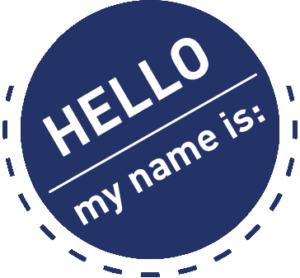November 2023

At the start of the year, it is common for teachers to ask students about their history with school and, for math teachers, with math. It is fairly common to hear students say, “I’ve never been very good at math.” This is often cemented into the conversation when families add that they, too, “were never very good at math.” When I taught at the high school level, I would ask students why they came to class. I would hear, “Because I have to,” and “I need math to graduate and go to college.” I would let students know that they were there for so much more. This would lead to a conversation with students about the Standards for Mathematical Practice.
Now that I am an instructional coach, in the same district but at a middle school, I get to engage in conversations with teachers about student engagement in the math classroom. I often find myself leaning into coaching about the Standards for Mathematical Practice as an entry point to growth in almost every other aspect of the classroom. I believe that people learn through story-telling and narratives, so I will share two such experiences in the hopes of highlighting the power of this approach.
MP1: Make sense of problems and persevere in solving them.
I was checking in with a new special education teacher who wanted to learn more about supporting productive struggle. It was so exciting to have a teacher explicitly name “productive struggle” as a focus. She felt like she was over-supporting her students and not allowing them to engage in enough struggle. I asked her to share more about how students experience the work time in class. She described a consistent pattern. The lesson launch happens, kids are assigned classwork, group work begins, and she circulates to support. I asked her how long students have to read through and make sense of the task before she starts interacting with them, and her response was that she starts interacting immediately. This became our entry point.
When I asked her what “productive struggle” was versus “unproductive struggle,” she had a very clear vision in her mind. I asked if the students would have the same vision. From that question, the rest of her year changed. She asked her students to describe what it looks like, sounds like, feels like, etc., if they were struggling productively and how it might differ from unproductive struggle. The students had such powerful contributions! With the teacher’s support, the students created a “productive struggle” rubric to use in class that helped them track their ability to do “productive things.” Teachers and students had a common language, a common vision, and a rubric to reference during conversations about what is expected during class. This “rubric” was so helpful that on days the teacher was absent, the students on her caseload that used it took out a blank copy and started noticing behaviors in each other to show the teacher upon her return the next day!
MP3: Constructing viable arguments and critiquing the reasoning of others.
In the middle of January, a teacher reached out to me because her teams were struggling to work together. She described her students as mostly working independently and unaware of their teammates’ work. She asked to work collaboratively with me on trying to shift the culture of the room. I came in for our first class time together and noticed a slightly different situation. Many of the students started each class asking a question, sharing an idea, or generally talking to their peers. As class continued, the talking lessened, and more eyes started checking on the work of nearby students. It was clear that the students were interested in working together; they just didn’t know how.
In our follow-up, the teacher and I discussed the objectives of the lesson. They explained all of the “mathy” stuff the kids were supposed to learn, the formative assessments, and additional planned supports. Then, I asked, “What math practice standard did you have in mind?” This question blew open the doors to conversations that resulted in some of the most exciting work!
The teacher hadn’t considered the math practices in the lesson because she wasn’t familiar with them. I explained their background and that they are just as essential for mathematical learning as the content standards. We began to talk about what they look like in the classroom and how to teach them. Since she was concerned about students working collaboratively, and I observed that students were interested in this, we decided to prioritize our learning around MP3: Construct viable arguments and critique the reasoning of others.
I sat down with the teacher and asked her to describe what that might look and sound like in her classroom. Some of the behaviors she described included asking questions, helping peers, and students showing their work in writing. We decided that we were going to focus on asking and answering questions between peers to support the group dynamic, keeping MP3 in our minds.
We chose to be transparent with the students about our focus and why. We shared the list of practices and told students that we would spend time incorporating skills that will help them become better at arguing. (Students found this phrasing to be a personal challenge to argue more, bring it on!) We began the next lesson by asking students to work through a bell-ringer problem. This particular day was focused on a skill that all students knew how to do from a previous grade. We asked them to think about all of the mistakes they could make and then to complete the problem and intentionally make a mistake so they got a wrong answer. Students were initially confused at the request (“You want us to do it wrong on purpose?”).
After they all completed their problem, we held a class discussion. We talked about how scary it can be to ask a peer for help, and the importance of responding in a helpful and validating way. We asked students to share unhelpful ways to respond and things to say when a peer asks for help. They were really good at this! We then asked students for ways to respond in an unhelpful way but without using words, highlighting non-verbal communication. Students were also really good at this! Then, we asked students for examples of what they could say or do that is actually helpful. They were not as ready with ideas for how to respond to this request as they were with unhelpful responses.
Next, we turned students to the problem they all intentionally did wrong and tasked them to ask for help and respond to their peers’ requests using helpful words and actions. For the next few days, we started and ended each class with a reminder of this activity and had students focus on asking and answering questions. This helped students develop their effective communication skills, which supported their ability to construct an argument and critique the reasoning of others safely and respectfully.
Math Practices Tie Everywhere
I have yet to find a conversation with a math teacher about a growth goal that doesn’t somehow tie back to at least one math practice standard. These standards provide a framework for what an effective math classroom looks like, as long as we take the time to understand their meaning. This focus (on arguing or on struggling, for example) allows us to tell students that they are “good at math.” By being mindful of body language when responding to questions, they are doing math. When you identify a part of a problem that is confusing, they are doing math. In partnership with each other and the Standards for Mathematical Practice, we can reduce the stigma of “not being good at math” and build confidence in our students. When in conversations with your colleagues, listen for the math practices in the sub-text. They will be there, just begging to be investigated if we take the time to notice them.

Anthony Johnson
ajohnson@deforestschools.org

